This second post in my series of science books for science fiction readers moves from the inner space of the human mind to ideas of expanding human life across the galaxy. From Kip Thorne’s astrophysics and Antonio Damasio’s neurobiology to Freeman Dyson’s essays on space and the diary of a doctor in the aftermath of the Hiroshima atomic bomb explosion, each of these books is not only intrinsically interesting but helps sketch out the background for many a science fictional story.
Antonio Damasio: The Feeling of What Happens. Damasio is one of the most interesting writers on the neurobiology of the brain and consciousness. While many sff writers focus on the manipulation of mental states by injection of neurotransmitters, Damasio presents a much more complex model of the integration of body and mind.
He describes multiple levels of consciousness from core to extended to help explain the unique dimensions of human experience. He’s especially good at detailing the feelings of self-awareness and the autobiographical mind that guide us through everyday decisions and shape who we feel ourselves to be. His writing is always engaging and draws a lot on literary and philosophical sources as well as daily experience.
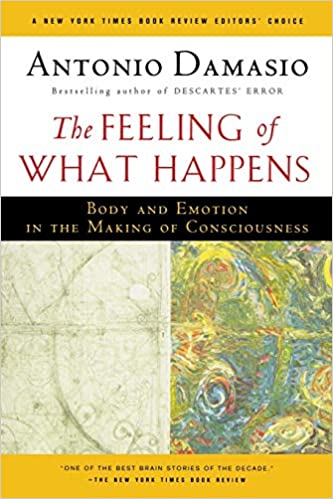
Most important for me is Damasio’s concept of consciousness as pre-verbal rather than a result of language. That has always seemed common sense to me, but here you can find a scientifically rigorous approach that helps enormously in thinking about what the future might hold for the human mind.
“Perhaps the most startling idea in this book is that, in the end, consciousness begins as a feeling, a special kind of feeling, to be sure, but a feeling nonetheless. … Consciousness feels like some kind of pattern built with the nonverbal signs of body states. It is for this reason perhaps that the mysterious source of our mental first-person perspective — core consciousness and its simple sense of self — is revealed to the organism in a form that is both powerful and elusive, unmistakable and vague.”
Harcourt Trade Paper Edition, p. 312
Kip S. Thorne: Black Holes & Time Warps. You probably heard about Kip Thorne in connection with the movie Interstellar, for which he served as a science advisor. This incredible book presents everything you could possibly need to know about black holes, spacetime, wormholes, gravitational waves and more as a story of the development of one revolutionary idea after another over the past century. Thorne has been a key participant in that story and so offers his personal perspective of involvement in discoveries and anecdotes of working with many scientists, even those who proved him wrong at times.
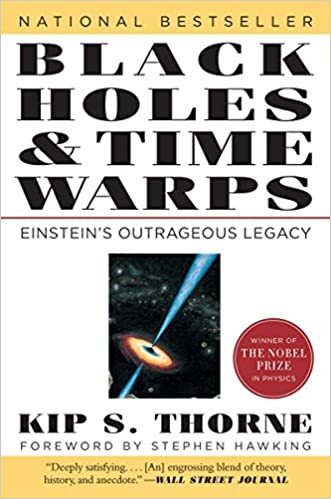
The writing is clear, absorbing and non-technical, and Thorne has provided extensive notes, glossary, bibliography and chronology, even a cast of characters, for those who want to go deeper. Since I was a teenager, I’ve read one popular account after another of relativity and astrophysics, including those by many other great scientists, but this is the book I keep referring back to for its clarity and what I would call friendly depth in the way it treats some of the most complex ideas out there.
“Imagine yourself the owner and captain of a great spacecraft, with computers, robots, and a crew of hundreds to do your bidding. You have been commissioned by the World Geographic Society to explore black holes in the distant reaches of interstellar space and radio back to Earth a description of your experiences. Six years into its voyage, your starship is now decelerating into the vicinity of the black hole closest to Earth, a hole called ‘Hades’ near the star Vega.”
Black Holes and Time Warps, Norton trade paper edition pp. 23-4
Thorne begins with this science fictional journey into the depths of space to illustrate his main topics before beginning his comprehensive exploration of the development of the scientific understanding of black holes. Even if you don’t get through the whole of this detailed story, the opening fictional journey will get you interested in finding out a lot more of what we do and do not know.
Freeman Dyson: Disturbing the Universe. The physicist Freeman Dyson was one of the great humanist thinkers of the past century, always relating science to the most difficult problems people face. Disturbing the Universe contains some of his most thoughtful and inspiring essays, but it is particularly the third section, called Points Beyond, that is especially relevant to science fiction readers.
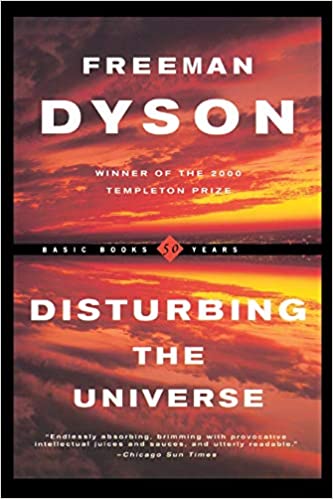
In “Extraterrestrials” he looks closely at the search for extraterrestrial intelligence, which he believes should be carried out across the electromagnetic spectrum in every possible medium rather than narrowly through radio waves. He speculates on the likelihood of other civilizations and the means it would take to support them.
Among many other ideas, he reviews what has come to be called the Dyson sphere or swarm for gathering the energy of a star (tracing his discovery of the concept to Stapledon’s Star Maker). He reviews Kardashev’s three types of civilization and speculates on the inner motives that could lead humanity to expand to the stars or to stagnate on earth.
In “The Greening of the Galaxy” he projects methods for humanity to make use of a variety of technologies to populate worlds beyond our solar system, allowing for the possibility of the evolution of very different humanoid species that would be able to survive in what seem to us to be utterly hostile environments. Dyson’s thought experiments and speculations are endlessly fascinating but always tied to fundamental questions of human survival and integrity.
He rounds out this series of essays that mingle history, autobiography, science and projections of the human future with his own travels to understand how native peoples adapted to hostile environments on earth. In “Back to Earth” he describes a visit with his son to the Canadian Pacific archipelago. The rationale for this is telling and characteristic of his approach.
“Anybody who pursues a grand design for the expansion of terrestrial life into the universe had better observe carefully the spirit and style of the people who succeed in living in harmony with nature in the wildernesses of earth. The universe is an archipelago, with small islands of habitable ground separated by vast seas of space. The archipelago that extends up the Pacific coasts of Canada and Alaska…is in some sense a microcosm of the universe. With these thoughts in mind, I kept a journal of a visit that I made in 1975 to the Canadian Pacific islands where my son and his friends are living.”
Disturbing the Universe, Harper & Row hardcover edition, p.239
Michihiko Hachiya, M.D.: Hiroshima Diary. We are inundated with dystopian and apocalyptic fiction, but this factual account of the Hiroshima bombing by a survivor is more gripping than any imaginative tale. Dr. Hachiya recounts in simple language his direct observations of the first two months following the blast.
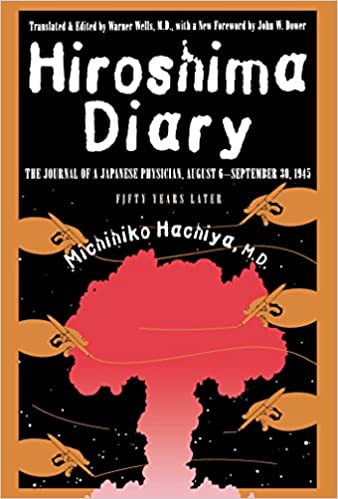
Starting with his own injuries, the collapse of his house and his staggering efforts with his wife to get to his hospital, he records as precisely as he can the terrible details of an event neither he nor anyone else really understood. A smell of sardines turns out to be coming from piles of burning corpses. People wander around, like zombies, skin hanging off their arms, faces melted away, lying down in a daze to die.
No one had heard of radiation poisoning, but the loyal hospital staff, which Dr. Hachiya directed, worked tirelessly to accommodate the injured and dying, even after a fire swept through much of the hospital building. There is no larger commentary here, simply the duty of a physician to do what he could and to record the details of human injury to better understand what seemed at the time like a mysterious illness that followed the destruction of the city.
This is the most powerful description I know of living through an unimaginably hellish event. Far from depicting human savagery, it is all about the many ways people came together to help each other deal with the sudden collapse of their world.
It is the army that becomes the focus of the doctor’s anger.
“The name of the Emperor was invoked as a national allegiance and a means for deriving power long before an unsuspecting people could see the results. An officer class developed that was dedicated to reckless bravado and swagger. Even the cadets in the military schools were taught to believe that they were superior and in a class apart. Spuriously infected with a sense of power and inflated pride, they trampled rough-shod over everyone beneath them.”
Hiroshima Diary, Chapel Hill trade paper edition, p. 88
In the end, the military retreated into the hills and left the civilians to fend for themselves. Through the selfless efforts of people like Dr. Hachiya, they saved as many people as they could and struggled to return some semblance of order to their lives.
Can you suggest other books that offer some of the scientific and factual inspiration for science fictional stories?
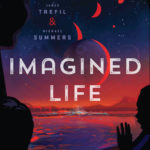
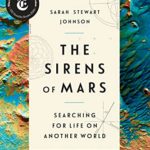
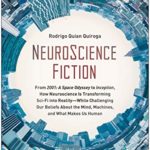

Leave a Reply